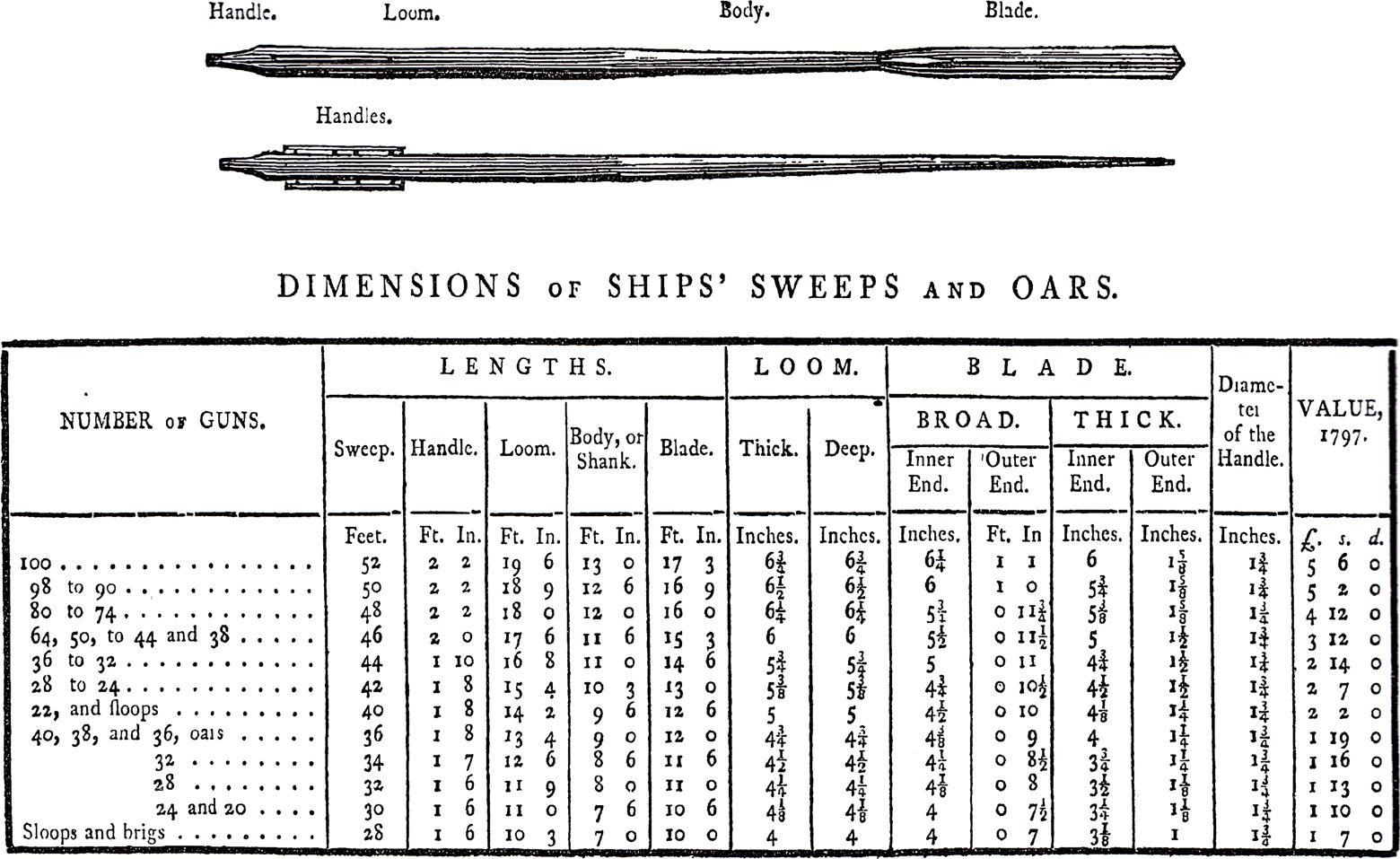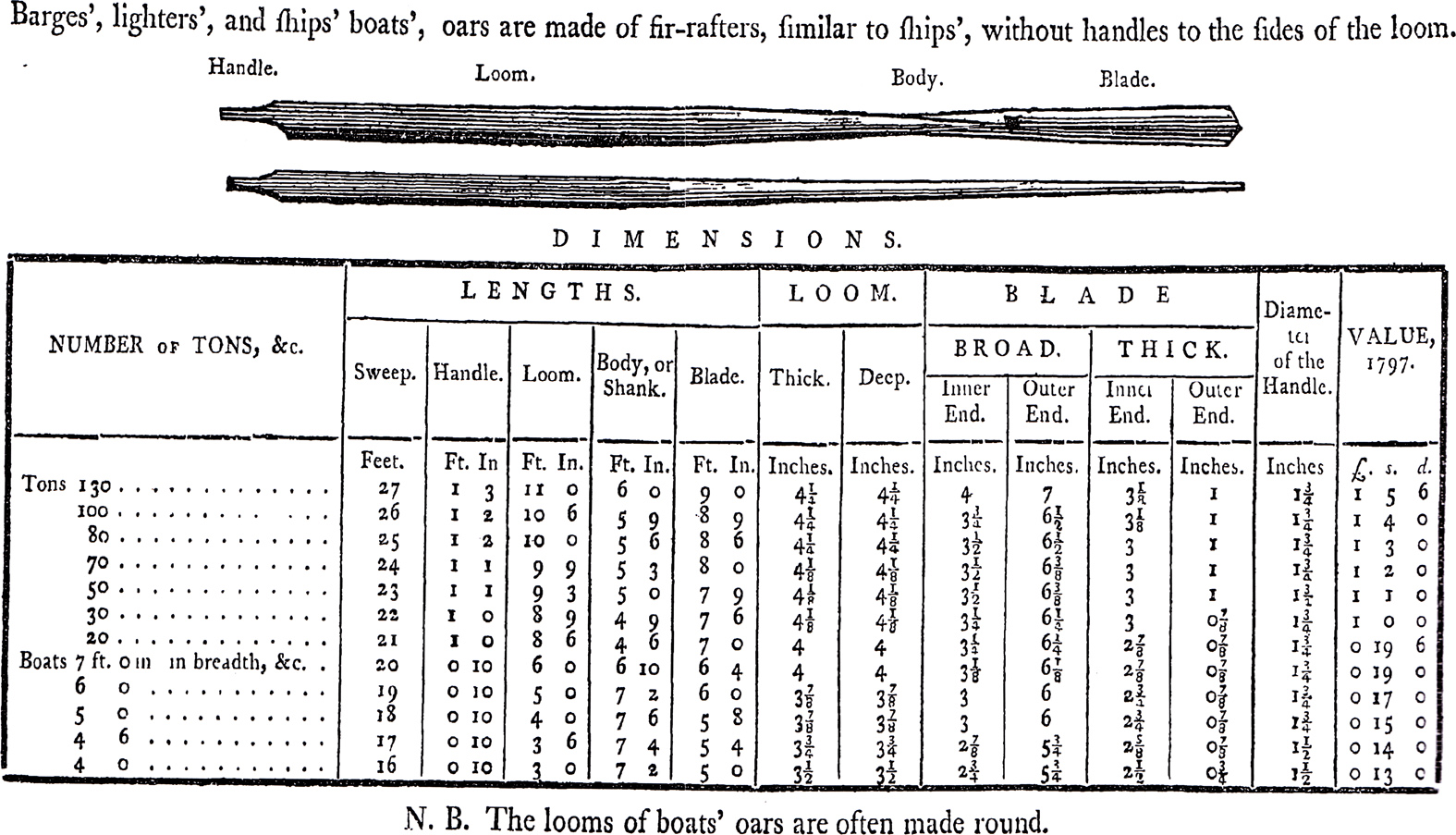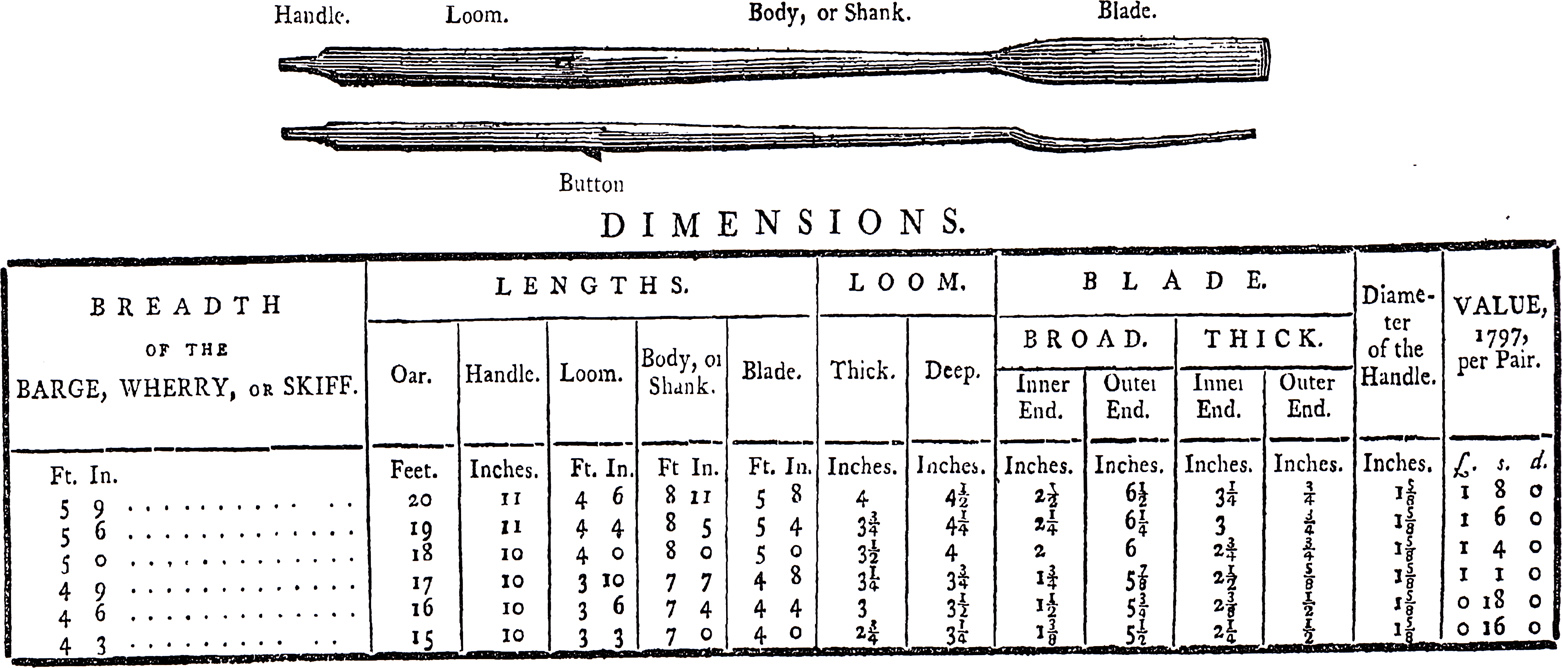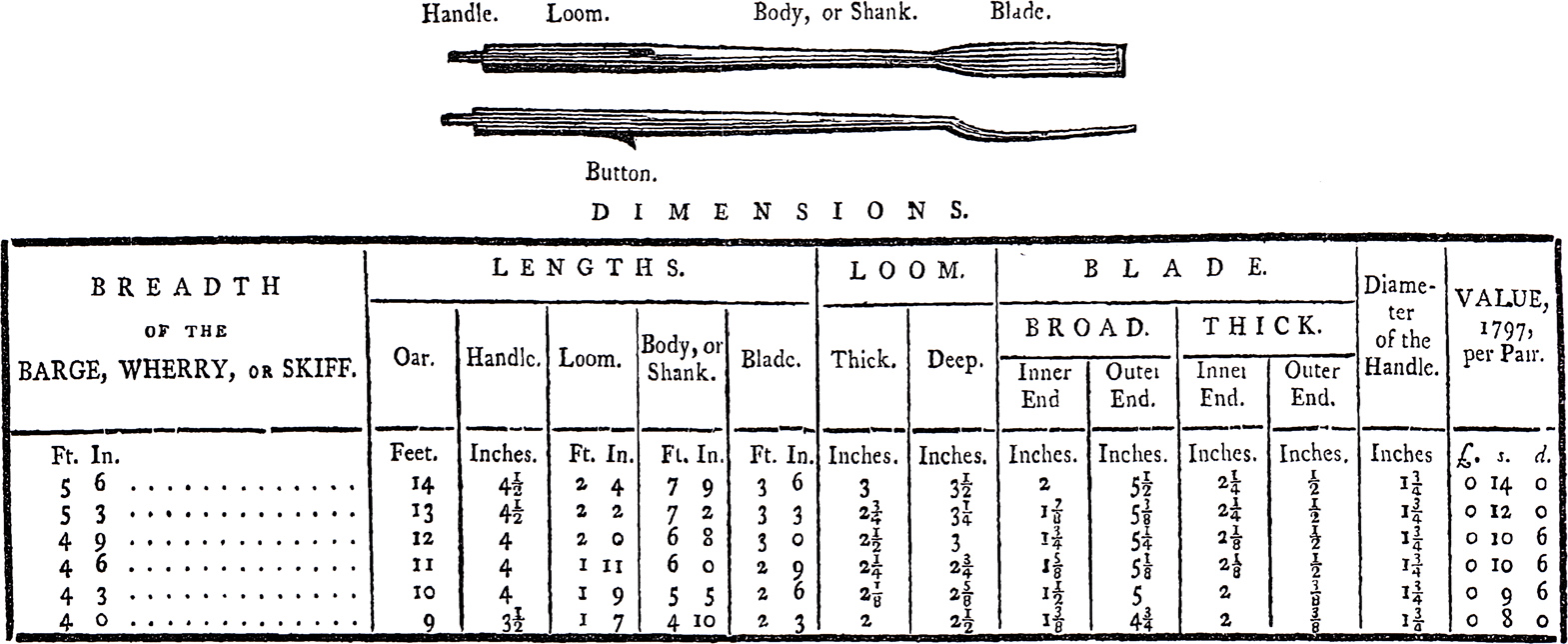I have a copy of W. E. May’s book Boats of Men of War. It is an excellent book that I recommend. Amongst other items in the book are a fair number of reproductions of draughts of ship’s boats. One showing an 18′ cutter seemed to have a very small height between the top of the thwarts and the bottom of the chocks for the thole pins. Out of curiosity, I measured each of the draughts where I could identify the chock-to-thwart distances reliably. Here is a summary of my results:
| Boat | Year | Length | Beam | No. of thwarts | Double banked? | Thwart spacing | Vertical height between thwart and chock | Horizontal distance from chock center to aft edge of thwart |
| Barge | 1809 | 32′ | 7′ 6″ | 7 | Yes | 3′ 0″ | 9.9″ | 7.5″ |
| Pinnace | 1815 | 37′ 6″ | 8′ | 9 | Yes | 2′ 11.5″ | 10.5″ | 10″ |
| Yawl | 1799 | 26′ | 6′ 6″ | 6 | No | 2′ 7.5″ | 9″ | 10.6″ |
| Cutter | 1764 | 28′ | 6′ 7″ | 8 | No | 2′ 2″ | 8.2″ | 9.8″ |
| Cutter | 1786 | 28′ | 7′ 1″ | 8 | No | 2′ 3″ | 9.1″ | 10.6″ |
| Yawl | 21′ | 6′ 5″ | 6 | No | 2′ 4.5″ | 7.9″ | 11.6″ | |
| Cutter | 1800 | 18′ | 6′ 6.5″ | 4 | No | 2′ 10″ | 6.2″ | 9″ |
| Launch | 1779 | 29′ | 8′ 7″ | 7 | Yes | 2′ 10.8″ | 7.2″ | 9.2″ |
| Launch | 1804 | 33′ | 9′ 10″ | 8 | Yes | 2′ 9.2″ | 8.4″ | 9.7″ |
| Launch | 1815 | 35′ 10.5″ | 9′ 8.5″ | 9 | Yes | 2′ 11.6″ | 10.2″ | 10.5″ |
| Gig | 1815 | 25′ 4″ | 5′ 7″ | 6 | No | 2′ 7.3″ | 6″ | 9.8″ |
Having only 6 inches between the thwart and chock seems too small, even if the rower is sitting on the far side of the boat.



